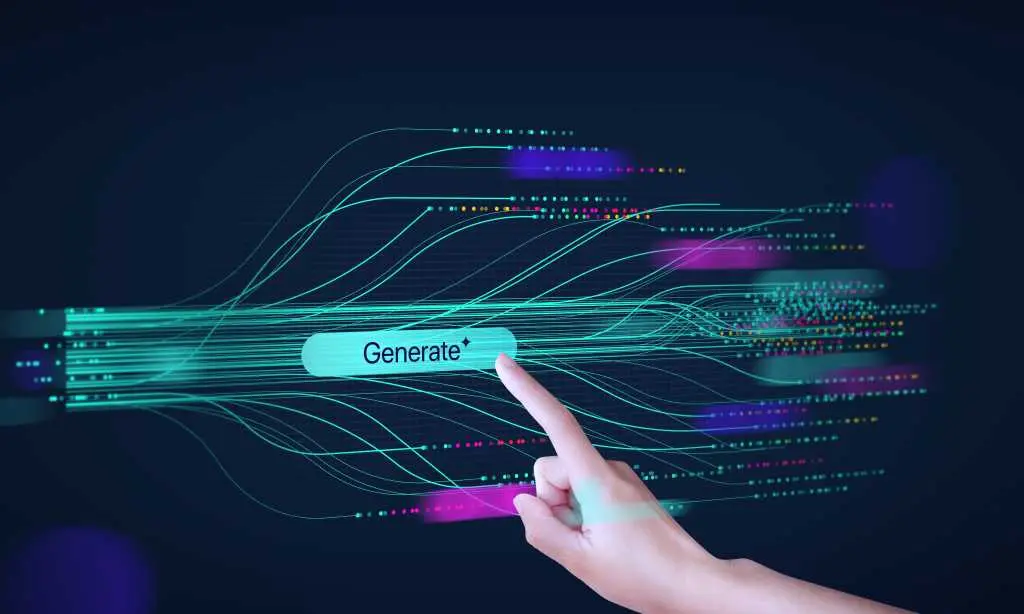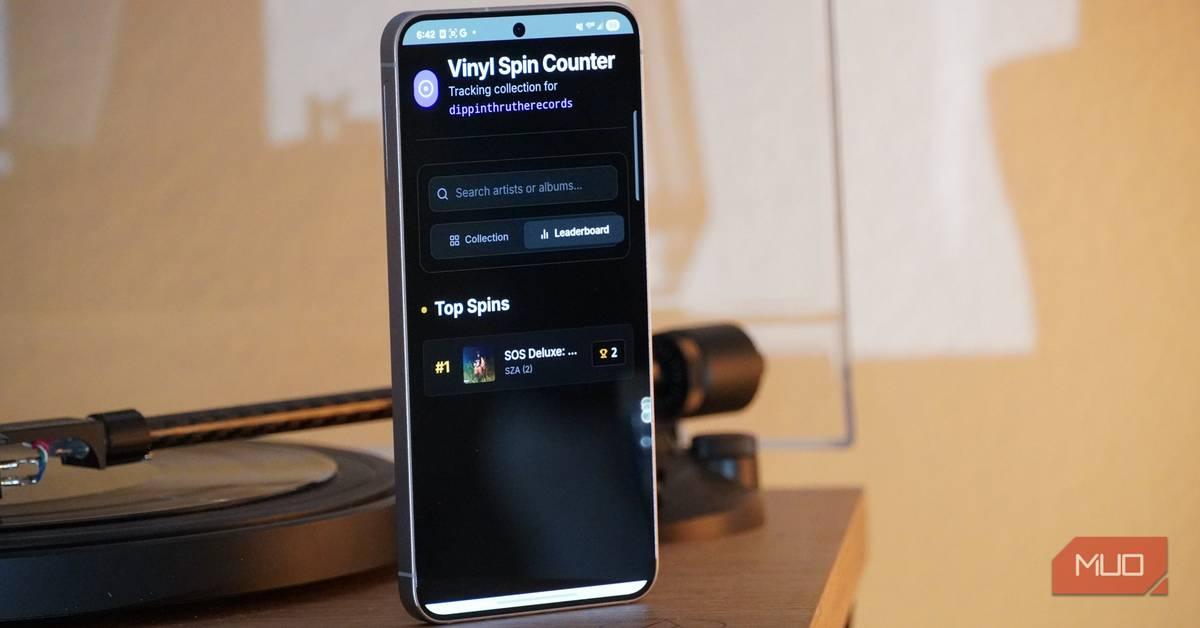Google Unveils Opal: AI-Powered No-Code App Development Tool
6 Sources
6 Sources
[1]
Google's new AI tool Opal turns prompts into apps, no coding required
Historically, building an app required an intimate understanding of the intricacies of writing code. Thanks to AI, those days are over. Google unveiled Opal, an experimental tool out of Google Labs that allows developers to create apps using natural language prompts and interactive visual aids, Thursday. Opal harnesses a suite of Google's proprietary AI models to help users create various visual assets for their apps. Gemini 2.5 can assist with the written copy for a blog post, for example, while Veo 3 and Imagen 4 can generate accompanying videos (including audio) or images, respectively. Also: Google's new Search mode puts classic results back on top - how to access it "We want to deliver a product that gives users more control and transparency over combining all the capabilities of Google models, without having to code," Elle Zadina, a product manager with the company, said in an online demo video. The feature offers a gallery of premade app templates, each with its own aesthetic, similar to those offered by website-building platforms like Wix and Squarespace. They're also tailored to different creative needs: one lets you build immersive virtual games, for example, and another is geared toward generating video ads for a specific audience. You can also start from scratch by clicking the "Create New" window above the template gallery. This will direct you to a simple prompt window, where you can describe in natural language a rough overview of the function you'd like your app to perform. Your instructions will be converted into an illustrated workflow, organized by inputs (what you've requested), generation steps (the specific steps the models are taking to design the app), and output (the final, amalgamated product). Each step appears as a separate box, which you can click to see the specific actions the models are taking or add your own edits directly. There's also a "Share app" option in the top-right corner of the screen in Opal, through which you can toggle your app from private to public and share a URL with anyone with a Google account. Opal is available now for US users in public beta -- you can access it here. Also: I got ChatGPT Agent to deliver a truly useful report - and then NotebookLM took it to the next level This release comes just one day after Microsoft-owned GitHub launched Spark, a similar app-building platform, in public preview. These systems are part of a broader trend throughout the tech industry toward "low-code" and "no-code" tools, which harness AI to automate many of the key steps in the software development process. Get the morning's top stories in your inbox each day with our Tech Today newsletter.
[2]
Google Labs introduces Opal for developing AI mini apps
Now in public beta, developers can use Opal to build and remix AI mini apps using conversational natural language commands, a visual editor, or both. Google Labs has announced the public beta of Opal, an experimental tool for building AI mini apps by chaining together prompts, tools, and models, using natural language and visual editing. Currently available in the United States only, Opal was introduced July 24. The tool can be used to accelerate prototyping of AI ideas and workflows, demonstrate a proof of concept, or build custom AI applications to boost productivity. Opal is billed as an experimental product exploring the future of building with AI models and prompts. The beta release includes a demo gallery with starter templates that can be used as-is or remixed to fit specific needs. Opal lets developers bring prompts to life with no code required, according to Google Labs. The tool helps simplify workflows, empowering users to build multi-step apps by chaining together prompts, AI model calls, and other tools. Developers simply describe the logic, and Opal will build a visual workflow. Opal also translates instructions into visual workflows for editing, providing fine-grained control without the need to review a line of code.
[3]
Google debuts no-code Opal tool for building 'AI mini apps' - SiliconANGLE
Google LLC has introduced an artificial intelligence tool that enables users to build simple applications without writing any code. The tool, which is known as Opal, made its debut on Thursday. The launch comes a few weeks after Amazon Web Services Inc. introduced an IDE, or integrated development environment, called Kiro that uses AI to speed up software projects. The starting point of an Opal development project is a ChatGPT-like chatbot interface. Users enter a natural language description of the task their application will perform. They can also provide any additional data that may be needed to complete the task, as well as connect external tools. The service uses the provided data to automatically generate a simple application. Once the software is ready, users can share it through a button at the top right corner of the interface. It makes the application accessible through a sharing link similar to those used by Google Docs. Optionally, workers can edit an Opal-generated application before publishing it using a visual editor. The editor represents an application as a collection of cards on a virtual canvas. Some of the cards describe the input the application ingests, while others control how it processes that input. The visual editor makes it possible to link together multiple data processing steps. For example, a user could have an application generate a product description and then create a promotional video based on that description. Workers can customize how such tasks are performed by entering natural language instructions via Opal's visual editor. "Opal converts your app description into a multi-step workflow with inputs, generation steps and output steps," Google product manager Elle Zadina explained in a demo video. "You can click into a step to see the prompt or instructions and edit them directly." Under the hood, Opal relies on multiple AI models to generate applications. Google didn't specify which algorithms are used. One candidate is the company's recently introduced Gemini 2.5 Pro large language model, which is particularly adept at application development tasks. It has set a record on the popular LMArena benchmark for measuring LLMs' coding skills. Given that Opal is geared towards creating simple applications, it may not require the advancing programming features offered by Gemini 2.5 Pro. Google may be using a less capable but more power-efficient coding model to power the tool. Opal's clip generation features, in turn, are presumably based on one of the company's Veo video algorithms. Opal is rolling out with more than a half dozen pre-built applications. Some focus on consumer use cases such as designing video games. The rest enable workers to generate marketing materials, research products and perform other business tasks. On launch, Opal is available to users in the U.S. through a public beta program. The tool can be accessed via Google Labs, a webpage that hosts more than two dozen of the search giant's experimental AI products. They automate tasks ranging from searching the web to generating application interface designs.
[4]
Meet Opal: Google's vibe coding AI agent
Google has introduced Opal, a new AI coding agent, accessible through Google Labs. This tool enables users to develop, modify, and share mini-applications using natural language commands, expanding on existing AI coding capabilities. Opal follows Google's earlier AI coding agent, Jules, which focuses on code improvement. Opal is designed for "vibe coding," where AI generates the code. Users can sign up via Google Labs to access Opal without cost. Google states Opal creates apps from natural language inputs, such as "make an app to order breakfast." The agent then provides a customizable project. Opal also facilitates sharing of these applications. While vibe coding offers increased accessibility for app development, it carries risks. A venture capitalist reported that an AI, specifically Replit, deleted an entire database due to an error, despite significant development time invested. Proponents highlight the simplicity vibe coding brings to projects.
[5]
Opal New Google Labs AI App Turns Your Ideas Into Reality
What if creating AI-powered workflows was as easy as sketching out your ideas on a napkin? Enter Opal, Google Labs' latest innovation, which promises to make that vision a reality. Designed to simplify the often complex world of large language model (LLM) automation, Opal combines innovative AI with an intuitive interface, empowering users of all skill levels to build and customize workflows with minimal coding. Whether you're a seasoned developer or someone just dipping their toes into AI, Opal positions itself as a fantastic option, offering tools that don't just automate tasks but unlock entirely new possibilities. With its seamless integration into Google's ecosystem and a focus on user-friendly design, Opal is poised to redefine how we think about productivity and creativity in the AI era. But what makes Opal truly stand out? This overview by Sam Witteveen explores how its features, such as pre-built templates and prompt chaining -- can transform everything from content creation to research and prototyping. You'll discover how Opal's adaptability allows you to craft workflows tailored to your unique needs, whether you're generating blog posts, summarizing complex data, or designing niche tools for specialized industries. And while competitors exist, Opal's deep integration with Google's advanced AI capabilities gives it a distinct edge. As we unpack its potential, you might find yourself rethinking how automation fits into your daily life -- and wondering just how far this technology can take you. Opal is a workflow automation platform that uses the power of LLMs to streamline and optimize tasks. Whether you are a novice or an experienced developer, Opal provides an intuitive interface to design workflows that chain prompts, integrate tools, and automate repetitive processes. Its primary objective is to make LLM-based application development more accessible, allowing you to focus on creativity and functionality rather than technical complexities. By reducing the barriers to entry, Opal opens the door for a wide range of users to explore the possibilities of AI-driven solutions. Opal offers a comprehensive suite of features designed to enhance productivity, flexibility, and ease of use. These include: These features make Opal a versatile tool for automating tasks across industries, from content creation and marketing to data analysis and beyond. A key strength of Opal lies in its emphasis on customization and prototyping. The platform allows you to modify workflows, adjust prompts, and add new nodes to refine your applications. This flexibility enables you to create proof-of-concept solutions that can evolve into fully functional tools. For instance, you could prototype a workflow for generating blog posts and later adapt it for creating social media content, conducting academic research, or even automating customer support responses. This adaptability ensures that Opal can grow alongside your needs, making it a valuable resource for both individuals and organizations. While other workflow automation tools like N8N and Lindy offer similar functionalities, Opal distinguishes itself through its seamless integration with Google's ecosystem. Features such as advanced image generation and Google search integration provide unique advantages that competitors may lack. Furthermore, Opal's focus on LLM-driven workflows makes it particularly effective for tasks requiring natural language understanding and generation. This specialization positions Opal as a leading solution in the rapidly evolving field of AI-powered automation, offering capabilities that are both robust and user-friendly. Opal's versatility enables it to address a wide range of use cases, making it a valuable tool for professionals across various industries. Here are some practical applications: These examples highlight how Opal can transform both routine and complex tasks, allowing you to achieve greater efficiency and effectiveness in your work. Opal is currently in public preview and available exclusively in the U.S., with access for users outside the region possible via VPN. As the platform evolves, Google plans to introduce additional features and enhancements to further expand its capabilities. These updates are expected to include improved integrations, advanced customization options, and new templates to address emerging user needs. With Google's commitment to innovation, Opal is poised to remain a valuable tool for years to come, adapting to the changing demands of its users and the broader technological landscape.
[6]
Google Launches Free AI App Builder Opal That Embraces 'Vibe Coding'
Create Apps with Words: Google Debuts Free AI Tool Opal for Builders Google has unveiled Opal, a new AI-powered tool designed to make app development accessible to everyone with no coding required. Available for free through Google Labs (for US users only), Opal is part of a growing movement called vibe coding. This approach lets Artificial Intelligence handle the majority of coding tasks, allowing users to focus on creative input rather than technical complexity. Unlike previous AI tools like Jules, which aimed to assist with coding improvements, Opal takes things a step further. It builds entire mini web apps based on natural language prompts, making it possible to create software simply by describing what you want.
Share
Share
Copy Link
Google Labs introduces Opal, an experimental AI tool that allows users to create applications using natural language prompts and visual editing, without requiring coding skills.
Google Introduces Opal: A Revolutionary AI-Powered App Development Tool
Google Labs has unveiled Opal, an experimental AI tool that promises to transform the app development landscape. Launched on July 24, 2025, Opal enables users to create applications using natural language prompts and visual editing, eliminating the need for traditional coding skills
1
.
Source: SiliconANGLE
How Opal Works
Opal harnesses a suite of Google's proprietary AI models to streamline the app creation process. Users can describe their desired app functionality in natural language, and Opal converts these instructions into a visual workflow. The system utilizes various AI models, including:
- Gemini 2.5 for generating written content
- Veo 3 for video generation (including audio)
- Imagen 4 for image creation
1
Elle Zadina, a product manager at Google, emphasized the tool's focus on user control and transparency, stating, "We want to deliver a product that gives users more control and transparency over combining all the capabilities of Google models, without having to code"
1
.Key Features and Functionality
Opal offers a range of features designed to simplify the app development process:
-
Template Gallery: Users can choose from premade app templates tailored to different creative needs, similar to website builders like Wix and Squarespace
1
. -
Visual Workflow Editor: The tool represents applications as a collection of cards on a virtual canvas, allowing users to link multiple data processing steps and customize tasks using natural language instructions
3
.

Source: Analytics Insight
-
Prompt Chaining: Opal enables users to chain together prompts, AI model calls, and other tools to create multi-step applications
2
. -
Sharing Capabilities: Completed apps can be easily shared through a URL, accessible to anyone with a Google account
1
.
Related Stories
Applications and Use Cases
Opal's versatility makes it suitable for a wide range of applications across various industries:
- Content Creation: Generating blog posts, social media content, and marketing materials
- Data Analysis: Summarizing complex data and creating research tools
- Prototyping: Rapidly developing proof-of-concept solutions
- Customer Support: Automating response systems
- Education: Creating interactive learning tools
5

Source: InfoWorld
Industry Impact and Future Prospects
The introduction of Opal aligns with the broader trend in the tech industry towards "low-code" and "no-code" tools. This movement aims to democratize software development by making it accessible to users without traditional coding expertise
1
.While Opal offers exciting possibilities, it's important to note potential risks associated with AI-generated code. A venture capitalist reported an incident where an AI system (Replit) accidentally deleted an entire database, highlighting the need for caution and oversight in AI-driven development
4
.As Opal continues to evolve, Google plans to introduce additional features and enhancements, including improved integrations and advanced customization options. The tool is currently available in public beta for US users, with potential expansion to other regions in the future
5
.References
Summarized by
Navi
[4]
[5]
Related Stories
Google Expands AI-Powered App Builder Opal to 15 New Countries, Enhances Features
08 Oct 2025•Technology

Google Antigravity lets AI agents build apps autonomously with minimal human oversight
11 Dec 2025•Technology

Google Launches Firebase Studio: AI-Powered App Development Platform Sparks Debate
10 Apr 2025•Technology

Recent Highlights
1
OpenAI releases GPT-5.2 AI model after code red memo targets Google's Gemini 3 threat
Technology

2
Disney invests $1 billion in OpenAI, licenses 200+ characters for Sora AI video generator
Technology

3
OpenAI faces wrongful death lawsuit after ChatGPT allegedly fueled murder-suicide tragedy
Policy and Regulation





